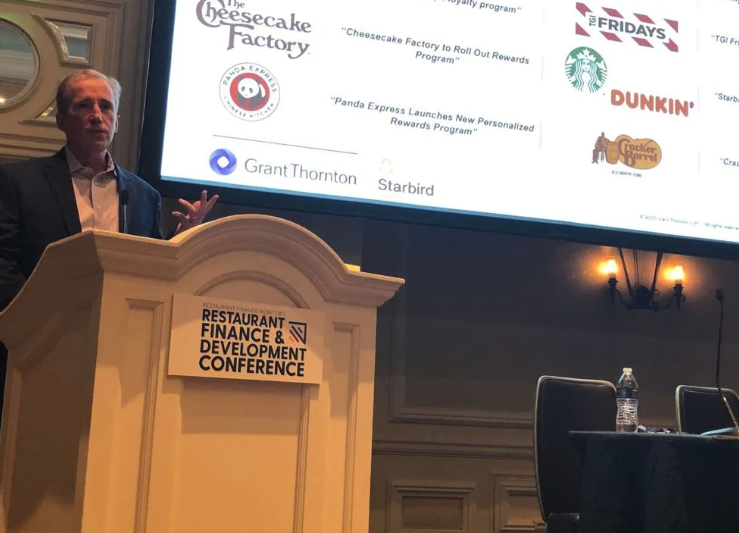Loyalty programs are a way to give recurring customers a reward for frequency, but industry experts believe they should go beyond discounts.
During the Restaurant Finance & Development Conference on November 14, Kevin O’Connell, managing director of strategy and transactions at the firm Grant Thornton made that point to attendees. He was joined for a panel discussion by Aaron Noveshen, founder and CEO of the San Francisco-based Starbird Chicken.
O’Connell said while restaurant brands invest an estimated $300 billion in loyalty programs, they don’t always accomplish the desired goal.
“If you look at a lot of brands over the last six months, what you see is a revamping and reintroducing of loyalty programs,” O’Connell said. “There’s a constant churn of major changes to every program, and you’ll find that maybe nobody has this figured out. And it’s not just restaurants, you can look at retail and find the same thing.”
A common problem with the programs, O’Connell said, is that most customers don’t use the rewards made available.
“At least 50 percent of rewards go unused,” O’Connell said. “That’s even kind of conservative, with some programs having up to 75 percent of rewards going unused. The brands want people to come in, they want that traffic, but peoples’ behavior is hard to change.”
The ability to discover more about guests is also limited, according to O’Connell.
“There’s a lot of data on how many people joined, what the redemption rate was and what the email open rate was,” O’Connell said. “There are a lot of statistics on how programs are working, but not as much insight that tells you about your guests. It’s not telling you why they’re coming, who they chose us over and what product made the difference. It doesn’t tell you why they love your brand.”
The advantage of loyalty programs then, O’Connell explained, is the ability to educate potential customers and notify them about new promotions.
“The bottom line is brands don’t create demand to capture a share of customers in the market,” O’Connell said. “When people go out, a brand has an opportunity to get a share of that traffic, but you can’t convince them to have a need that you don’t have a need for. So, the way you win is through awareness, accessibility and differentiation.
“From a customer’s point of view, they want to know if they can buy a product, if it’s convenient and if it serves the need they want now,” said O’Connell. “This is where loyalty programs can actually do a good job, because they can maintain that awareness, create accessibility and communicate differentiation.”
Noveshen said Starbird, which has 13 locations, incorporated O’Connell’s findings in its loyalty program development.
“Our takeaway was that there was to push and grow overall awareness and not just running to discounts,” Noveshen said. “Discounts are part of it. Giving things to people and rewarding them is important, but just doing that and thinking it’s the main reason people are coming to you is not what we wanted to focus on.”
One way the decade-old brand did this was by creating product-focused messaging. Noveshen said the program has been designed in a way to show people what they love and makes it easy for them to order it again.
“We’ve also shifted to a points system,” Noveshen said. “It allows for a lot of variation. Instead of just putting a reward in the customer’s account, it allows the customer to choose what’s important to them with their points. There’s a much larger range of things a guest can do with a point system, and we can segment products. That’s something we’ve done to grow our user base and their frequency, rather than trying to change habits.”


